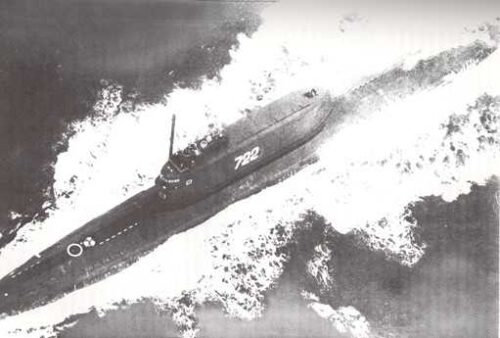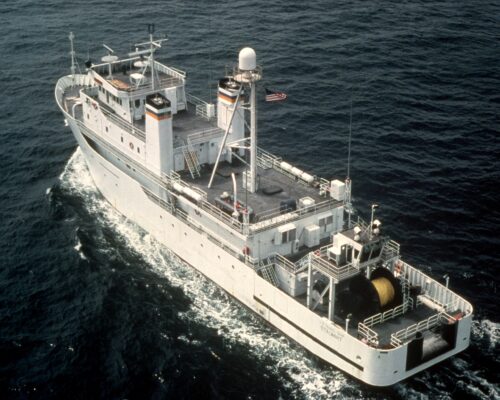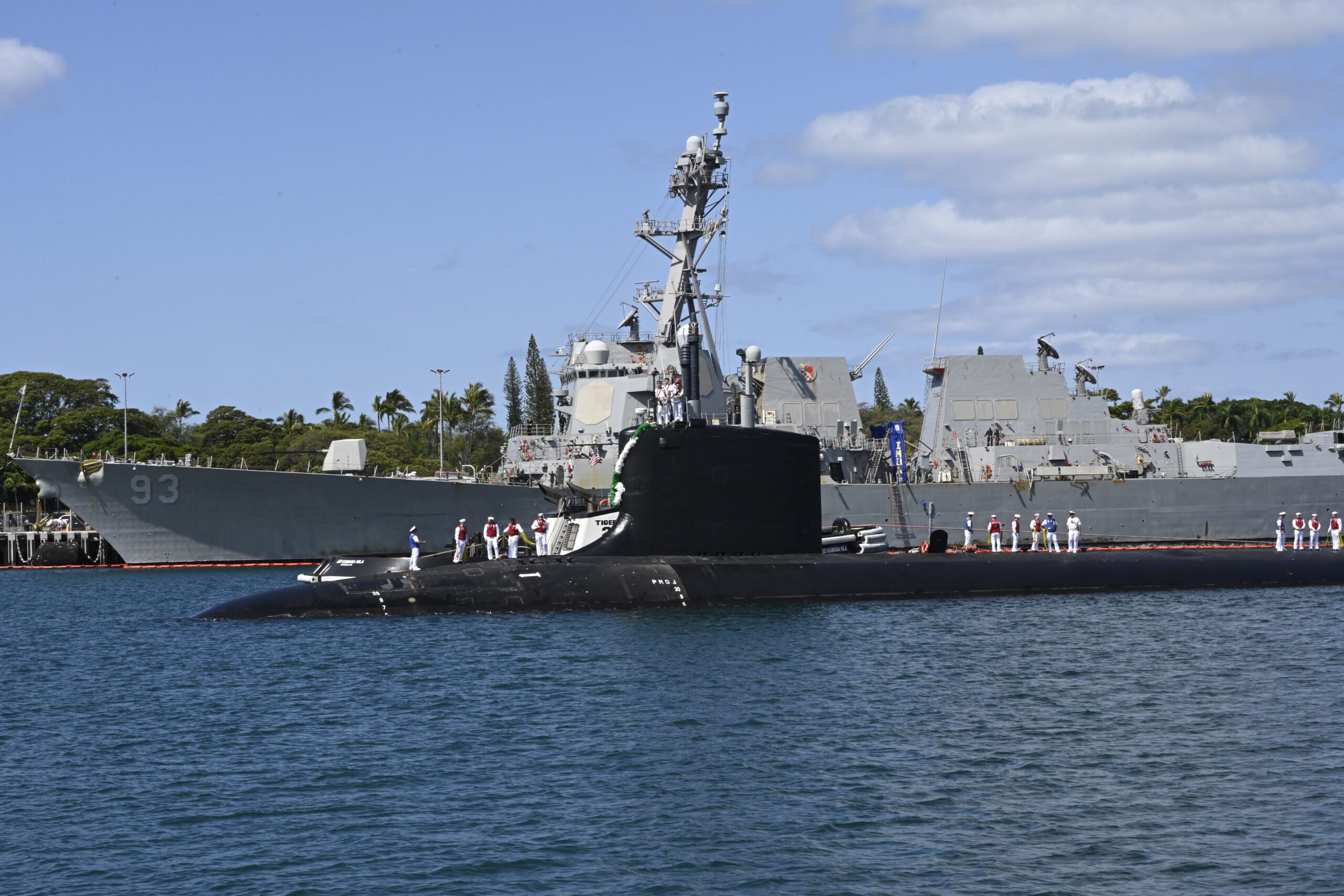U..S. Navy photo (Released)
The Integrated Undersea Surveillance System (IUSS) is a crucial component of the U.S. Navy’s anti-submarine warfare capabilities. The system was born out of the Cold War era, with its existence only made public in 1991.
The IUSS began over 66 years ago under the code word “SOSUS”, which stands for “Sound Surveillance System”. The system was born out of a need to counter the submarine threat during World War I. The U.S. Navy realized the need for a more detailed understanding of the oceanic environment and how it affects the transmission of sound in saltwater.
In early 1950, “Project Jezebel” was initiated, dedicated to the detection, classification, and localization of enemy submarines. This project led to significant discoveries about low-frequency sound, which would aid in developing a method for detecting submarines at great distances.
During the Cuban Missile Crisis, the IUSS made the first positive correlation of a SOSUS contact and fixed-wing patrol contact, made off a Soviet Foxtrot-class submarine. Throughout the Cold War The IUSS successfully tracked multiple Soviet diesel and nuclear submarines.
One of its best-known successes was the detection of the sinking of Soviet ballistic missile sub K-129 in 1968, which led directly to the top-secret Central Intelligence Agency (CIA) Glomar Explorer mission.

Challenges Faced Today
The world’s submarines, including those of the U.S., are becoming quieter, making detection more difficult1. New detection techniques are emerging that don’t rely on the noise a submarine generates, potentially making some traditional manned submarine operations riskier.
The meteoric rise of China as a sea power and the potential for its vessels to attack Taiwan or sabotage critical undersea infrastructure, including oil pipelines and fiber-optic internet cables, is a significant challenge. The revival of the IUSS surveillance system could help offset China’s numerical advantage in the South China Sea and the Strait of Taiwan.
The procurement and maintenance of the IUSS and its components, such as the TAGOS-25 class ocean surveillance ships, can be subject to budget constraints and cost overruns4. For example, the Navy’s FY2024 budget submission showed that the ship’s estimated procurement cost had subsequently grown to $789.6 million—an increase of $355.2 million, or 81.8%.
The Navy’s current fleet of TAGOS (Military Sealift Command Auxiliary General Ocean Surveillance ships), sometimes written T-AGOS, which support the IUSS, are aging and need to be replaced. The Navy plans to procure seven TAGOS-25 class ships as replacements for its five in-service TAGOS ships.
These challenges require continuous innovation, investment, and strategic planning to ensure the IUSS remains effective in its mission of undersea surveillance and defense.

Modernization and Current Capabilities
Today, the IUSS is undergoing the biggest overhaul since the 1950s, as new technologies are reshaping maritime warfare. The modernization involves retrofitting a fleet of surveillance ships with cutting-edge sensors and subsea microphones. The goal is to boost the military’s ability to spy on its foes.
The most innovative change in the Navy’s ocean reconnaissance system is an investment in new technologies to miniaturize and globalize traditional maritime surveillance tools². The Navy plans to deploy a fleet of unmanned sea drones to listen for enemy craft, place portable “underwater satellite” sensors on the seafloor to scan for submarines and utilize artificial intelligence (AI) software to analyze maritime spy data.

Key Components
The IUSS is a complex system with several key components that work together to ensure the IUSS can effectively carry out its mission of undersea surveillance and defense.
Fixed, Mobile, and Deployable Acoustic Arrays are the primary means of submarine detection for both nuclear and diesel submarines. They provide vital tactical cueing to Anti-Submarine Warfare (ASW) forces. These arrays are crucial in the early detection of potential threats, allowing for timely responses.
Naval Ocean Processing Facilities (NOPFs) play a significant role in the IUSS. These facilities are responsible for the detection, classification, and timely reporting of information on submarines and other contacts of interest. They serve as the nerve centers of the IUSS, processing and analyzing data from various sources.
Surveillance Towed Array Sensor System (SURTASS) ships provide anti-submarine passive and active surveillance capability using towed-array sonar. These ships patrol the oceans, towing long arrays of hydrophones that listen for the sounds of enemy submarines.
The IUSS also includes Portable Seabed-Based Sensors. These sensors are placed on the seafloor to scan for submarines. They provide a persistent surveillance capability in areas of interest.
Unmanned drones are used to listen for enemy craft. These drones can be deployed in areas where it may be too risky for manned vessels. They extend the reach of the IUSS, providing additional coverage and flexibility.
AI technology is used to analyze the data from these elements. AI technology helps in sifting through the vast amounts of data collected by the IUSS, identifying patterns and anomalies that could indicate the presence of an enemy submarine.
In Conclusion
The IUSS exemplifies the U.S. Navy’s commitment to maintaining a technological edge in undersea warfare. As the maritime domain continues to evolve, so too will the IUSS, ensuring that the U.S. remains at the forefront of undersea surveillance and defense.
Please note that while this article is based on unclassified sources, the specifics of the IUSS operations remain Top Secret.
Resources
U.S. Navy
Navy.mil
Commander, Undersea Surveillance
CSP.Navy.mil/cus/IUSS-Commands
*The views and opinions expressed on this website are solely those of the original authors and contributors. These views and opinions do not necessarily represent those of Spotter Up Magazine, the administrative staff, and/or any/all contributors to this site.
